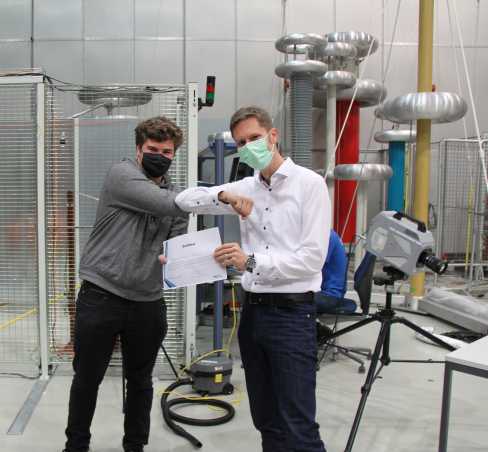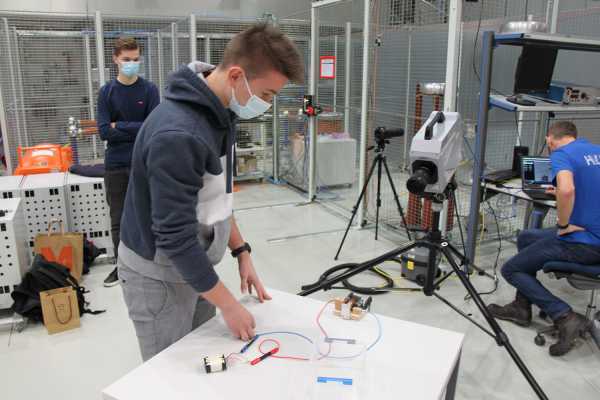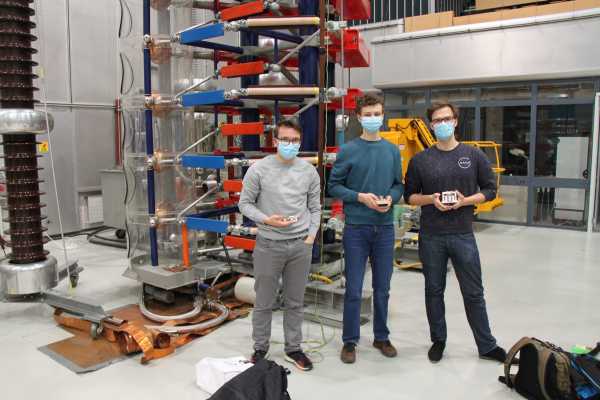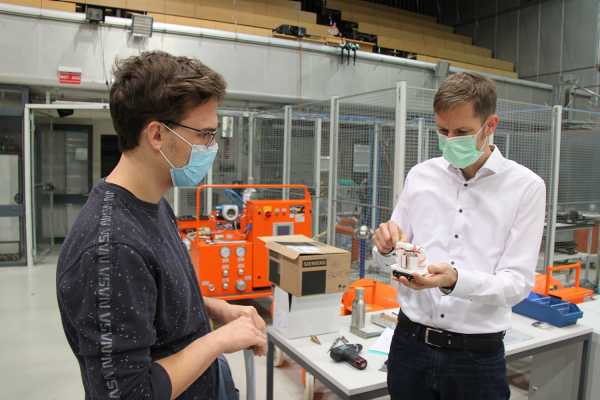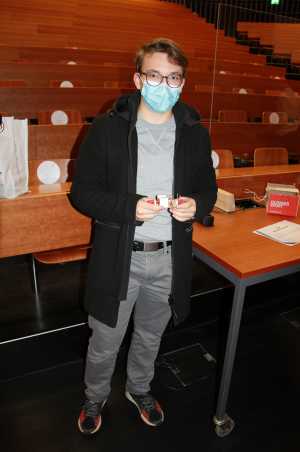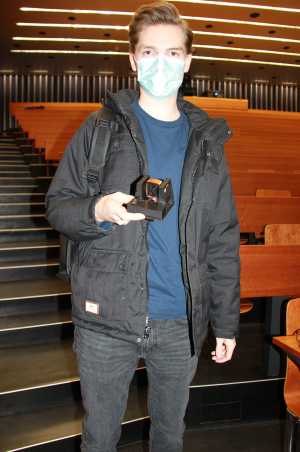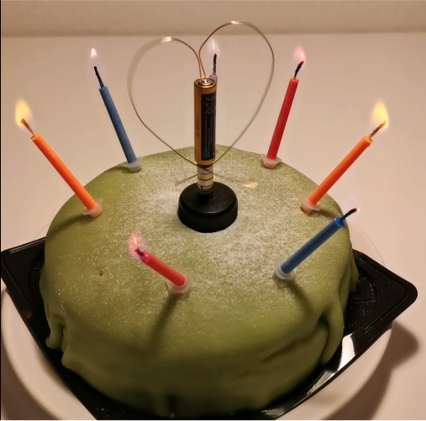Original constructions
The finalists demonstrated their mini-motors one after the other in the high-voltage laboratory on 15 December. A high-speed camera able to record up to 1 million images per second filmed the rotations and evaluated them.
Besides sophisticated constructions from the 3D printer, there were also very simple prototypes in which, for example, cardboard boxes, pins or PET bottle tops were used. As stated by Prof. Franck in the call for entries, many of the participants had actually been able to create simple yet very stable and fast-running motors using materials worth less than CHF 10. The amount of work required by the finalists was at least five to eight hours and several iterations until the desired final product was completed.
Afterwards, instead of the annual Christmas lecture with exciting experiments in the high-voltage laboratory, the final lecture "Networks and Circuits" was held in a large lecture hall. In compliance with the regulations due to the Corona pandemic, only the finalists were present at the award ceremony in the second part. The rest of the audience followed the proceedings via zoom. In addition to a course certificate signed and presented by Prof. Franck, the winners received original prizes such as a magnetic hourglass, a plasma lighter with a USB charging cable and a glowing light bulb that floats in the air.
